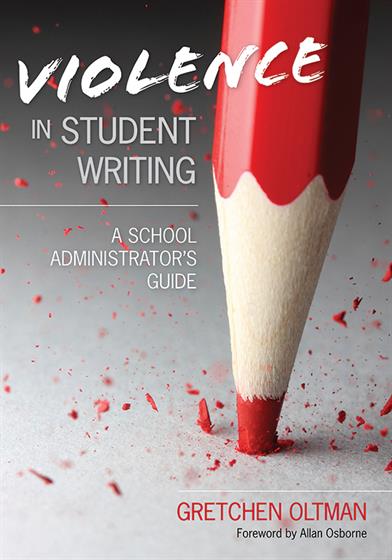Foreword by Allan Osborne
Preface
Acknowledgments
About the Author
Introduction
1. The Aftermath of Columbine on Student Writing
A Brief History of School Violence
The Columbine and Jonesboro Shootings: Writings as a Pretext for Violence
The Columbine Effect
The Aftermath of Columbine on the Student Writer
Boston, Massachusetts
Cary, Illinois
West Warwick, Rhode Island
Prosser, Washington
Johnston, Rhode Island
Summary
Practical Applications for Teachers and Administrators
For K-6 Schools
For 7-12 Schools
Questions to Consider
2. Schooling for Citizenship: A Legal Primer for Educators
Freedom of Expression in Today's Public Schools
The U.S. Constitution
Tinker v. Des Moines Independent School District
Bethel v. Fraser
Hazelwood v. Kuhlmeier
Morse v. Frederick
How Do These Cases Apply to Classroom Writing Samples?
The True Threat Standard
The Court’s Call for Citizenship Education
Citizenship Education Through the Curriculum
Courts Agree – Public Schools Are More Than Books and Pencils
Summary
Practical Applications for Teachers and Administrators
For K-6 Schools
For 7-12 Schools
Questions to Consider
3. School Culture and Student Safety
What Students Write About (And What It Can Say About Your School Culture)
The School Administrator’s Influence On School Culture
Improving Your School Culture
Summary
Practical Applications for Teachers and Administrators
For K-6 Schools
For 7-12 Schools
Questions to Consider
4. Regulating Student Expression: Examining Your School Policy
Why a Zero Tolerance Approach Fails Everyone
Incorporating Legal Principles Into School Policies
Sample Policies
Summary
Practical Applications for Teachers and Administrators
For K-6 Schools
For 7-12 Schools
Questions to Consider
5. Violent Writing Within the Classroom
Freewriting Is Not the Cause of School Violence
Writing as a Predictor of Violence
Writing Instead of Violence
The Unique Nature of the Writing Classroom
“But, Teacher, I Want To Be the Next Stephen King...”
The Lost Lesson: Purpose and Audience
Advice for All Teachers of Writing
Summary
Practical Applications for Teachers and Administrators
For K-6 Schools
For 7-12 Schools
Questions to Consider
6. Violent Writing Beyond the Classroom
Off-Campus Writings
Cases Where Schools Prevailed
Cases Where Students Prevailed
Cyberbullying, Texting, and Facebook Writings
When the Violent Writing Targets You
Staying Informed
Summary
Practical Applications for Teachers and Administrators
For K-6 Schools
For 7-12 Schools
Questions to Consider
7. Communicating With Teachers About Student Violent Writing
Conversing With Teachers Before the School Year Begins
Recognizing Potential Syllabus Problems
Reviewing Teacher Classroom Policies
Suggesting Teaching Methods When You Are Not a Writing Teacher
Continuing the Conversation
Summary
Practical Applications for Teachers and Administrators
For K-6 Schools
For 7-12 Schools
Questions to Consider
8. Threat Assessment for Student Violent Writing Incidents
Assessment Does Not Mean Profiling
Listening and Threat Assessment
Keep a Copy of Student Writing
A Sample Threat Assessment Form for Student Violent Writing Incidents
Summary
Practical Applications for Teachers and Administrators
For K-6 Schools
For 7-12 Schools
Questions to Consider
9. Acting and Responding to Student Violent Writing
The Need for a Timely Response
Responding Reasonably to All Student Violent Writing
Creating a Documentation Trail
Potential Administrative Responses
Summary
Practical Applications for Teachers and Administrators
For K-6 Schools
For 7-12 Schools
Questions to Consider
References
Appendix A



